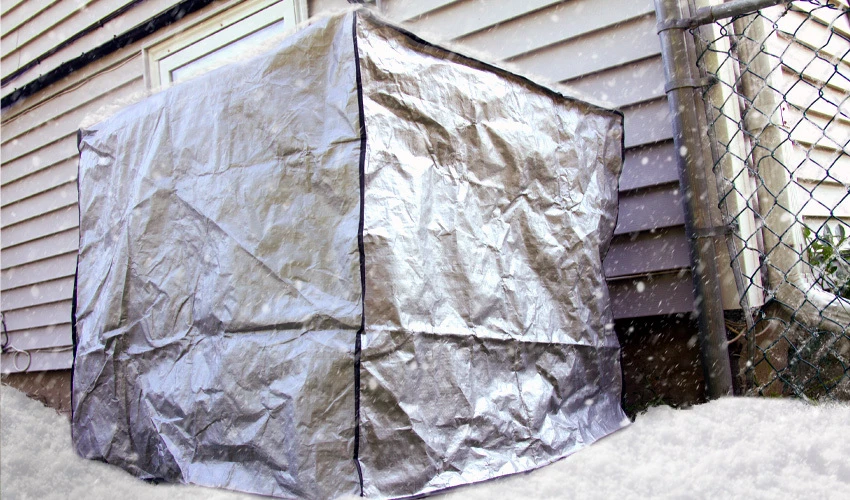
An air conditioner is a major appliance - which can equate to major replacement costs. So, maintaining your AC unit is of utmost importance - but is covering your AC unit necessary?
An outdoor air conditioner cover is designed to keep out dirt and debris, but, perhaps surprisingly, it’s not the best choice for every home or business owner.
Read on as we take a closer look at outdoor air conditioner covers, including who should use them, when to use them, and how to cover an air conditioner correctly.
Also, don’t forget to go through this pre-winter furnace checklist to make sure your home stays cozy over the cold-weather months.
First, What Is an Outdoor Air Conditioner Cover?
Air conditioner covers, available at most hardware stores, are designed to protect an outdoor air conditioning unit from the elements during the fall and winter months when it’s not running. Covers for air conditioners come in many different sizes, styles, and materials, including mesh, top-only covers, armor-plated, insulated, adjustable, water-resistant, and more.
Depending on the style, the goal of the cover is typically to keep seeds, rocks, grass, leaves, hail, ice, snow, and the like from damaging the unit.
Why an Air Conditioner Cover Isn’t Always Necessary
Although it makes sense that a cover might help the unit avoid contact with the elements, it may not always be necessary or even beneficial. Why? Because in certain circumstances they can cause more harm than good.
A good rule of thumb is to avoid using an air conditioner cover if you live in a high humidity climate and experience a lot of precipitation. In these climates, moisture can become trapped under the cover and cause more damage than it would if you had left the unit uncovered.
The risks of using an air conditioner cover in humid climates include:
- Mold and mildew growth
- Rust on the condenser coil
- Corrosion on the interior of the unit
But the concerns aren’t limited to humidity. Air conditioner covers may also create a relatively warm, safe, dry habitat for vermin, like rodents.
An outdoor air conditioning unit already has built-in protection to withstand cold weather elements, including snow, ice, and extreme temperatures. However, you still may benefit from covering your unit in advance of a major storm. If a winter storm is in the forecast, you can place a cover over the unit during the storm and remove it immediately once the weather has passed. This allows you to experience the benefits of a cover without damaging the system.
How to Cover Your Air Conditioner the Right Way
If you live in a dry climate and have a problem with debris getting stuck in the air conditioner condenser coil or other components, you may decide you prefer to use an outdoor air conditioner cover.
Or perhaps a winter storm is on its way and you need to take action to keep it safe from snow and ice.
Here’s how to cover it correctly and avoid the common problems associated with using a cover:
- Use a cover that features breathable material, not plastic, which traps moisture inside.
- Cover with plywood on the top of the unit only. This will protect the fan and other components from falling leaves, debris, ice, or hail.
- If you are committed to covering your AC year-round, consider building a shelter that provides shade in the summertime and protection from the elements in the winter. A well-secured shelter will protect the unit without creating moisture or rodent problems.
Alternatively, rather than covering with a material that may create condensation, apply a coat of wax to protect the metal. A wax layer will prevent the moisture from attaching to the metal.
One of the best ways to keep your HVAC system in top working condition all year long is to schedule professional maintenance with your local Aire Serv®. Call our team at (855) 512-2886 or request an appointment online to get started.

